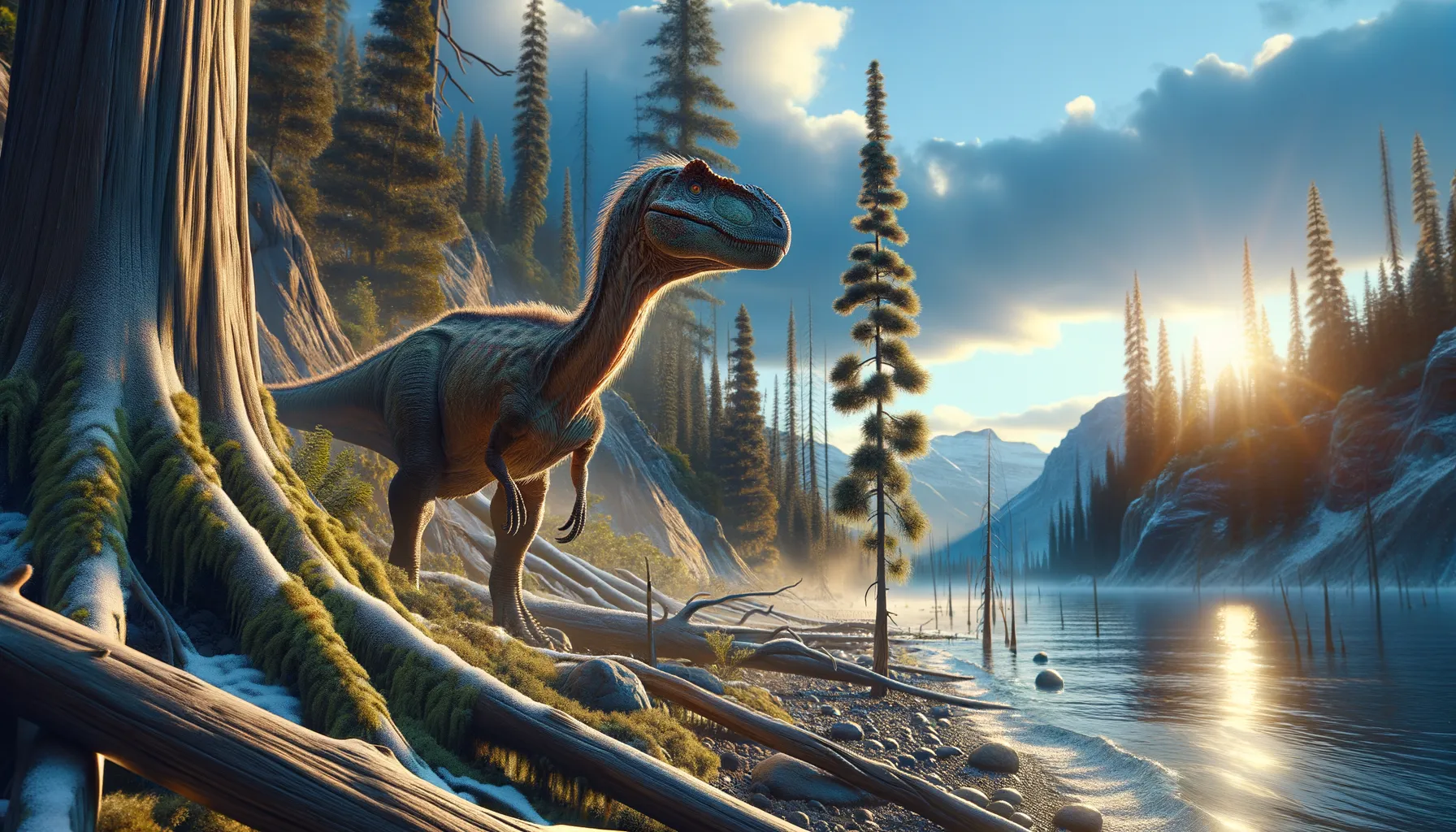
Albertadromeus
Swift-footed survivor of the Cretaceous!
Period
Cretaceous
Length
Roughly 5 feet in total length.
Height
Around 1.5 feet tall at the hips.
Weight
Approximately 30 kilograms (about 66 lbs).
Albertadromeus was a small, nimble dinosaur that lived during the Late Cretaceous period. Found primarily in what is now Alberta, Canada, this dinosaur is noted for its quick speed and agility, likely used to evade predators. It was a herbivore that feasted on the lush plant life available in its environment. Despite its diminutive size, Albertadromeus played a crucial role in its ecosystem, contributing to the biodiversity of its time.
Diet
Albertadromeus was a herbivore, subsisting on a diet of plants. It likely fed on ferns, leaves, and other low-lying vegetation, using its beak-like mouth to clip its food. Its diet helped maintain its energy for its agile lifestyle.
Hunting
Albertadromeus did not hunt as it was not a carnivore but may have been alert for potential predators. It relied on its agility to escape threats rather than search for prey.
Environmental challenges
Albertadromeus lived in a world filled with larger predators, requiring it to be constantly vigilant. Climate changes and shifts in vegetation could have posed challenges to its food supply. The landscape was dynamic, with rivers and floodplains shaping the environment, which may have also influenced its survival strategies.
Speed
Fast runner due to lightweight build.
Lifespan
Estimated several years, typical for small herbivores.
First discovery
Discovered in Alberta, Canada in 2009.
Fun Facts
- Albertadromeus was a small dinosaur that lived around 77 million years ago during the Late Cretaceous period.
- This dinosaur was about the size of a large turkey, making it one of the smallest known plant-eating dinosaurs from Canada.
- Albertadromeus had long, strong legs which suggest it was a fast runner.
- It was first discovered in the Canadian province of Alberta, which is how it got its name.
- Unlike some of its larger relatives, Albertadromeus likely relied on its speed and agility to escape predators.
- Its fossil remains were found in a region that includes the famous Dinosaur Park Formation, a hotspot for dinosaur discoveries.
- Albertadromeus adds to the evidence that small dinosaurs were more diverse and widespread than previously thought.
Growth and Development
Albertadromeus grew quickly to evade predators, something common in smaller dinosaurs. It passed through juvenile stages rapidly, developing sharper senses and agility early. Its skeleton shows signs of lightweight bones, a trait for rapid growth and movement.
Habitat
Its habitat consisted of open plains and forested areas, providing ample space to run. The varied landscape offered diverse plant life for feeding. Seasonal changes could have influenced migration patterns to find food and safety.
Interaction with other species
As a small herbivore, Albertadromeus likely competed with other herbivores for food. Its quick speed may have allowed it to dart into safe zones, avoiding more dominant species. It would have lived among both allies and potential threats.
Natural lifespan
The natural lifespan of Albertadromeus is thought to be several years.
Reproduction
Reproduction involved laying eggs, likely in nests hidden in vegetation. Parents may have provided some level of care, guarding the eggs. Its reproduction strategy ensured a high number of offspring to offset mortality rates.
Social behaviour
Although not much is known, Albertadromeus might have lived in small groups for protection. Social behavior could have included signals to alert others of danger. Its lifestyle required cooperation to forage safely.
Fossil locations
Fossils of Albertadromeus have been primarily found in the Dinosaur Park Formation in Alberta, Canada. These locations are rich in fossils offering insights into its life. The discovery has provided crucial information on small dinosaur diversity during the Late Cretaceous.
